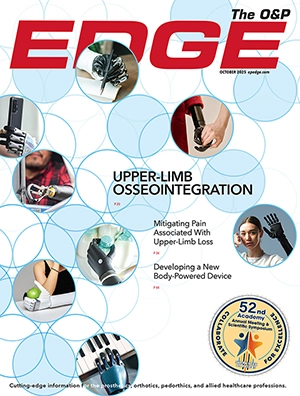A study led by neuroscientists at the University of Chicago (UChicago) brings them one step closer to building prosthetic limbs that can recreate a sense of touch through a direct interface with the brain. The research, published October 26 in the Proceedings of the National Academy of Sciences, shows that artificial touch is highly dependent on several features of electrical stimuli, such as the strength and frequency of signals. It describes the specific characteristics of these signals, including how much each feature needs to be adjusted to produce a different sensation. The sense of touch is a complex and nuanced set of sensations, from contact and pressure to texture, vibration, and movement.

Bensmaia.
Photograph by Jason Smith, courtesy of UChicago.
The research is part of Revolutionizing Prosthetics, a multiyear Defense Advanced Research Projects Agency project that seeks to create a modular upper-limb prosthesis that will restore natural motor control and sensation in individuals with amputations. Sliman Bensmaia, PhD, an associate professor of organismal biology and anatomy at UChicago and senior author of the study, and his colleagues are working specifically on the sensory aspects of the prosthesis.
For the study, monkeys, whose sensory systems closely resemble those of humans, had electrodes implanted into the area of the brain that processes touch information from the hand. The animals were trained to perform two perceptual tasks: one in which they detected the presence of an electrical stimulus, and a second in which they indicated which of two successive stimuli was more intense. During the experiments, Bensmaia and his team manipulated various features of the electrical pulse train, such as its amplitude, frequency, and duration, and noted how the interaction of each of these factors affected the animals’ ability to detect the signal.
“This is where the rubber meets the road in building touch-sensitive neuroprosthetics,” said Bensmaia. “Now we understand the nuts and bolts of stimulation, and what tools are at our disposal to create artificial sensations by stimulating the brain.”
Of specific interest to the researchers were the “just-noticeable differences,” the incremental changes needed to produce a sensation that felt different. For instance, at a certain frequency, the signal may be detectable first at a strength of 20 microamps of electricity. If the signal has to be increased to 50 microamps to notice a difference, the just-noticeable difference is 30 microamps. Bensmaia and his colleagues documented the range, composition, and specific increments of signals that create sensations that feel different from each other.
“When you grasp an object, for example, you can hold it with different grades of pressure. To recreate a realistic sense of touch, you need to know how many grades of pressure you can convey through electrical stimulation,” Bensmaia said. “Ideally, you can have the same dynamic range for artificial touch as you do for natural touch.”
Editor’s note: This story was adapted from materials provided by the University of Chicago.
For information about Bensmaia’s previous research, read “Chicago Neuroscientists Aim to Develop a Prosthesis with Sense of Touch,”
“Sense of Touch Reproduced Through Prosthetic Hand” and
“Blueprint Published for Restoring Touch with a Prosthetic Hand.”



